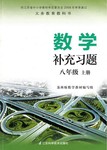15.Multitasking
People who multitask all the time may be the worst at doing two things at once,a new research suggests.The findings,based on performances and self-evaluation by about 275college students,indicate that many people multitask not out of a desire to increase productivity,but because they are easily distracted (分心) and can't focus on one activity.And"those people turn out to be the worst at handling different things,"said David Sanbonmatsu,a psychologist at the University of Utah.
Sanbonmatsu and his colleagues gave the students a set of tests and asked them to report how often they multitasked,how good they thought they were at it,and how sensation-seeking (寻求刺激) or imperative (冲动)
they were.They then evaluated the participants'multitasking ability with a tricky mental task that required the students to do simple mathematical calculations while remembering a set of letters.
Not surprisingly,the scientists said,most people thought they were better than average at multitasking,and those who thought they were better at it were more likely to report using a cellphone while driving or viewing multiple kinds of media at once.But those who frequently deal with many things at the same time were found to perform the worst at the actual multitasking test.They also were more likely to admit to sensation-seeking and impulsive behavior,which connects with how easily people get bored and distracted.
"People multitask not because it's going to lead to greater productivity,but because they're distractible,and they get sucked into things that are not as important."Sanbonmatsu said.
Adam Gazzaley,a researcher at the University of California,San Francisco,who was not a member of the research group,said one limitation of the study was that it couldn't find out whether people who start out less focusedtoward multitasking or whether people's recognizing and understanding abilities change as a result of multitasking.
The findings do suggest,however,why the sensation-seeker who multitask the most may enjoy risky distracted driving."People who are multitasking are generally less sensitive to risky situations."said Paul Atchley,another researcher not in the group."This may partly explain why people go in for these situations even though they're dangerous."
67.The research led by Sanbonmatsu indicates that people who multitaskD.
A.seek high productivity constantly
B.prefer handling different things when getting bored
C.are more focused when doing many things at a time
D.have the poorest results in doing various things at the same time
68.When Sanbonmatsu and his colleagues conducted their research,theyA.
A.assessed the multitasking ability of the students
B.evaluated the academic achievements of the students
C.analyzed the effects of the participants'tricky mental tasks
D.measured the changes of the students'understanding ability
69.According to Sanbonmatsu,people multitask because of theirC.
A.limited power in calculation
B.interests in doing things differently
C.inability to concentrate on one task
D.impulsive desire to try new things
70.From the last paragraph,we can learn that multitaskers usuallyC.
A.drive very skillfully
B.go in for different tasks
C.fail to react quickly to potential dangers
D.refuse to explain the reasons for their behavior.
分析 本文是说明文,中国有句古语云:一心不可二用.而最近的一项研究就表明.那些经常一心多用的人往往就是同时做两件事做的最糟糕的人.正是因为不能专注于一件事,才会同时多做几件事,结果可想而知.
解答 67.D 细节理解题.根据第一段第一句话"People who multitask all the time may be the worst at doing two things at once"可知,一心多用,往往会把事情做得更糟糕.故选D.
68.A 细节理解题.根据第二段最后一句话"They then evaluated the participants'multitasking ability with a tricky mental task that required the students to do simple mathematical calculations while remembering a set of letters."可知,然后他们要这些学生一面做一些数学运算,一面记忆一组字母,用这个很刁难的方法来测试这些学生一心多用的能力.和A项意思一致,故选A.
69.C 细节理解题.根据第一段第二句的"but because they are easily distracted (分心) and can't focus on on activity."可知,许多人一心多用,并不是因为他们想要增强工作生产量,而是因为他们很容易分心或是不能专注于做一件事.故选C.
70.C 推理判断题.由最后一段的"People who are multitasking are generally less sensitive to risky situations."一心多用的人一般对危险的情形不太敏感.可知,对危险的事情,一心多用者往往对潜在的危险不能迅速判断.故选C.
点评 解答细节理解题时,一个常用的方法就是运用定位法,即根据题干和选项中的关键词从原文中找到相关的句子,与选项进行比较从而确定答案;推理判断题既要求学生透过文章表面文字信息推测文章隐含意思,又要求学生对作者的态度、意图及文章细节的发展作正确的推理判断,力求从作者的角度去考虑,不要固守自己的看法或观点.



 同步练习河南大学出版社系列答案
同步练习河南大学出版社系列答案 同步练习西南大学出版社系列答案
同步练习西南大学出版社系列答案 补充习题江苏系列答案
补充习题江苏系列答案 学练快车道口算心算速算天天练系列答案
学练快车道口算心算速算天天练系列答案